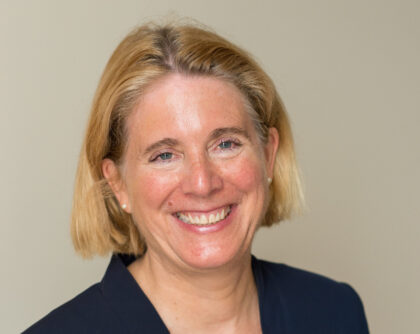Jacqueline N. Hewitt
Research Interests
Professor Hewitt’s research interests are in the application of techniques of radio astronomy and signal processing to problems in astrophysics. She was one of the pioneers of wide-area radio surveys with the Very Large Array radio telescope, work that led to the discovery of the first Einstein ring gravitational lens. Current topics are low-frequency radio studies of the Epoch of Reionization and the Cosmic Dawn, and surveys of transient astronomical radio emission. She was a founding collaborator in the Murchison Widefield Array project, a low-frequency radio telescope in Western Australia designed to study the Epoch of Reionization. Professor Hewitt is currently one of the lead investigators of a larger array with similar scientific goals,the Hydrogen Epoch of Reionization Array telescope project in South Africa. This array was recently used to measure the heating of the intergalactic medium by the first generation of stars 13 billion years ago.
Biographical Sketch
Jacqueline Hewitt graduated from Bryn Mawr College in 1980 and received her Ph.D. in physics from MIT in 1986. After postdoctoral appointments at MIT’s Haystack Observatory and at Princeton University, she returned to MIT in 1989 to join the faculty. From January 2002 through January 2019, she was Director of MIT’s Kavli Institute for Astrophysics and Space Research (formerly the Center for Space Research). She is the recipient of the 1993 Booker Prize from the International Union of Radio Science, the 1995 Maria Goeppert-Mayer Award from the American Physical Society (APS), and the 1991 Presidential Young Investigator Award from the National Science Foundation. In 2012, Time magazine named her one of the 25 most influential people in space. She is a fellow of the American Academy of Arts and Science, a fellow of the American Association for the Advancement of Science, a fellow of the APS, a former David and Lucile Packard Foundation fellow, and a former Alfred P. Sloan fellow. Her National Academies service includes chairing the committee that performed the Congressionally-mandated midterm assessment of the 2010 “New Worlds, New Horizons in Astronomy and Astrophysics” decadal survey; she was also the chair of Panel on Particle Astrophysics and Gravitation for the 2010 survey.

Early findings from HERA telescope promise deeper understanding of the cosmic dawn
Scientists including MIT’s Jacqueline Hewitt and Nicholas Kern share long-awaited results, getting closer to the universe’s first stars.
Awards & Honors
- 2020 // American Astronomical Society Legacy Fellow
- 2018 // Elected American Association for the Advancement of Science (AAAS) Fellow , 2018
- 2016 // Elected to the American Academy of Arts and Sciences
- 2012 // Named by Time magazine as one of the 25 most influential people in space
- 2004 // Fellow of the American Physical Society "For pioneering investigations of gravitational lenses using radio astronomy, application of gravitational lens studies to cosmology, and leadership in astronomy."
- 1995 // Maria Goeppert Mayer Award (APS) "For her contribution to radio astronomy; in particular, her pioneering work in detection of gravitational lenses, including the discovery of the first Einstein ring, and their detailed investigation, using polarization, time-delay, and other measurements."
- 1995 // Harold E. Edgerton Award (MIT)
- 1993 // Booker Prize from the International Union of Radio Science
- 1991-96 // Presidential Young Investigator Award, National Science Foundation
- 1990-95 // David and Lucile Packard Foundation Fellowship
- 1990-92 // Alfred P. Sloan Research Fellowship
- 1989 // Annie J. Cannon Award in Astronomy "for her work in radio astronomy."
